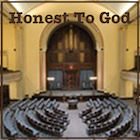
 This past Shabbat at Ansche Chesed, the feminist theologian Judith Plaskow was in our community, to celebrate a bat mitzvah with us. As we read Parashat Yitro – with relates the revelation of the 10 Commandments at Sinai – one sort of feels like it is Plaskow’s signature parasha, given the title of her most well-known book, Standing Again at Sinai. That 1990 work led the way in Jewish feminist theology. More than 20 years later Standing Again at Sinai remains full of insight. The title refers at least partly to the fact that the Torah itself seems always to address a male audience (speaking of “you and your wives”, for instance), consistently marginalizing women, always the “second sex,” never the mainstream. Feminist religion would have to stand at Sinai again to receive revelation anew. To a feminist Jew, like myself, this is a powerful critique of the tradition, and certainly shapes my own religious mindset going forward.
This past Shabbat at Ansche Chesed, the feminist theologian Judith Plaskow was in our community, to celebrate a bat mitzvah with us. As we read Parashat Yitro – with relates the revelation of the 10 Commandments at Sinai – one sort of feels like it is Plaskow’s signature parasha, given the title of her most well-known book, Standing Again at Sinai. That 1990 work led the way in Jewish feminist theology. More than 20 years later Standing Again at Sinai remains full of insight. The title refers at least partly to the fact that the Torah itself seems always to address a male audience (speaking of “you and your wives”, for instance), consistently marginalizing women, always the “second sex,” never the mainstream. Feminist religion would have to stand at Sinai again to receive revelation anew. To a feminist Jew, like myself, this is a powerful critique of the tradition, and certainly shapes my own religious mindset going forward.
The most notable example of the Torah’s androcentric orientation is Moses’ command to the Israelites to prepare for revelation [Exod 19.15]: “Be ready in three days – do not come near a woman.” Could any proof be clearer that our Torah speaks mainly to men, and considers women worse than marginal, practically inimical to the religious experience? Almost undeniable, and instantiated by plenty of commentators.
And yet… amazingly, some of the Sages read this verse precisely against the grain, to extract from it a mandate for women’s inclusion in the revelation – precisely the opposite of the apparent semantic meaning. I will paraphrase/explicate the rabbinic teaching, associated with Rabbi Eleazar ben Azarya (2nd century CE), which can be found in the Talmud Shabbat 86a, paralleled in the Midrash on Exodus called Mekhilta [Bahodesh 3] as well as in Rashi’s commentary to Exodus 19.15. (Warning: minor sexual explicitness follows.)
Be ready in three days – do not come near a woman. Seminal emission renders a person ritually impure. This is true whether the semen came from a man in the usual course, or whether it re-emerged from the body of a woman following sex. Whoever’s body emitted semen, male or female, would be considered equally ritually impure. (See Leviticus 15.16-18 for all this.) Semen deposited within a woman’s body could re-emerge for as many as three days, the Talmud says, but may be ignored after that time. Therefore, in warning “do not come near a woman,” Moses is telling his male listeners: do not compromise your wife’s eligibility to be present for God’s revelation. You might come and go, so to speak, but three days later she could still experience ritual impurity from an earlier encounter. You must abstain, Moses says, so that she too can be ready to stand at Sinai, the first time. According to this teaching, men are commanded to avoiding sex for the sake of the women’s experience of God, not for the sake of the men’s own experience.
Now, if a modern traditionalist offered such an interpretation, we’d sniff and call it apologetics, and accuse him of distorting the simple meaning of the Torah. But Rabbi Eleazar ben Azarya lived in the 2nd century! He certainly never knew he should be embarrassed by the Torah’s latent misogyny or androcentrism. He never heard a feminist critique of anything. He is not apologizing. He’s just explaining what seems to him the fullest meaning of the Torah.
And to our great surprise, this position turns out to be actually quite egalitarian. The ritual purity rules for males and females are, in this case, the same. And for R. Eleazar ben Azarya, so too the opportunity for men and women to stand at Sinai is fundamentally egalitarian.
Now, I would not deny Plaskow’s argument, which has a lot going for it. Certainly one midrash cannot disprove the reality of pervasive androcentrism in classical Judaism. Plaskow herself notes this text (p.27 in Standing), citing it as an example of a positive rabbinic instinct for women’s inclusion, although those same rabbis would “continually re-enact” exclusion.
Fair enough. But as a religious Jew and a student of the Sages, my deepest held belief is that the Torah contains the seeds of its own renewal. We certainly must be honest about where the Torah tradition has turned into blind alleys, where it is difficult for us moderns to find meaning. But this ancient text is an amazing counter example, I think, of the power of interpretation to keep Torah alive. It’s the never-dying, ceaselessly growing tree. From two millennia ago, an echo of an ancient rabbinic voice insists that everyone in Israel must be able to share the covenant. If that’s not the Tree of Life, I don’t know what is. I feel we’re all still standing at Sinai the first time.
- Nedarim, Daf 79 - January 12, 2023
- Nedarim, Daf 78 - January 11, 2023
- Nedarim, Daf 77 - January 10, 2023
